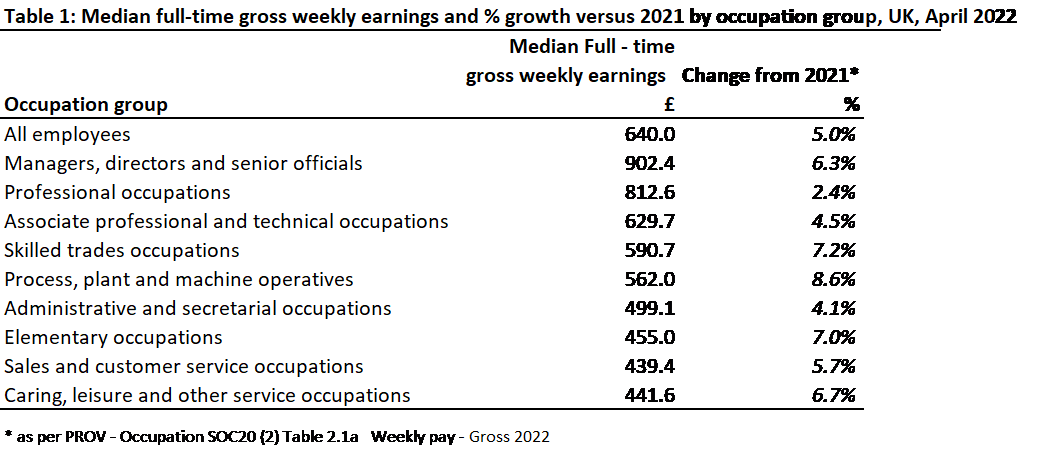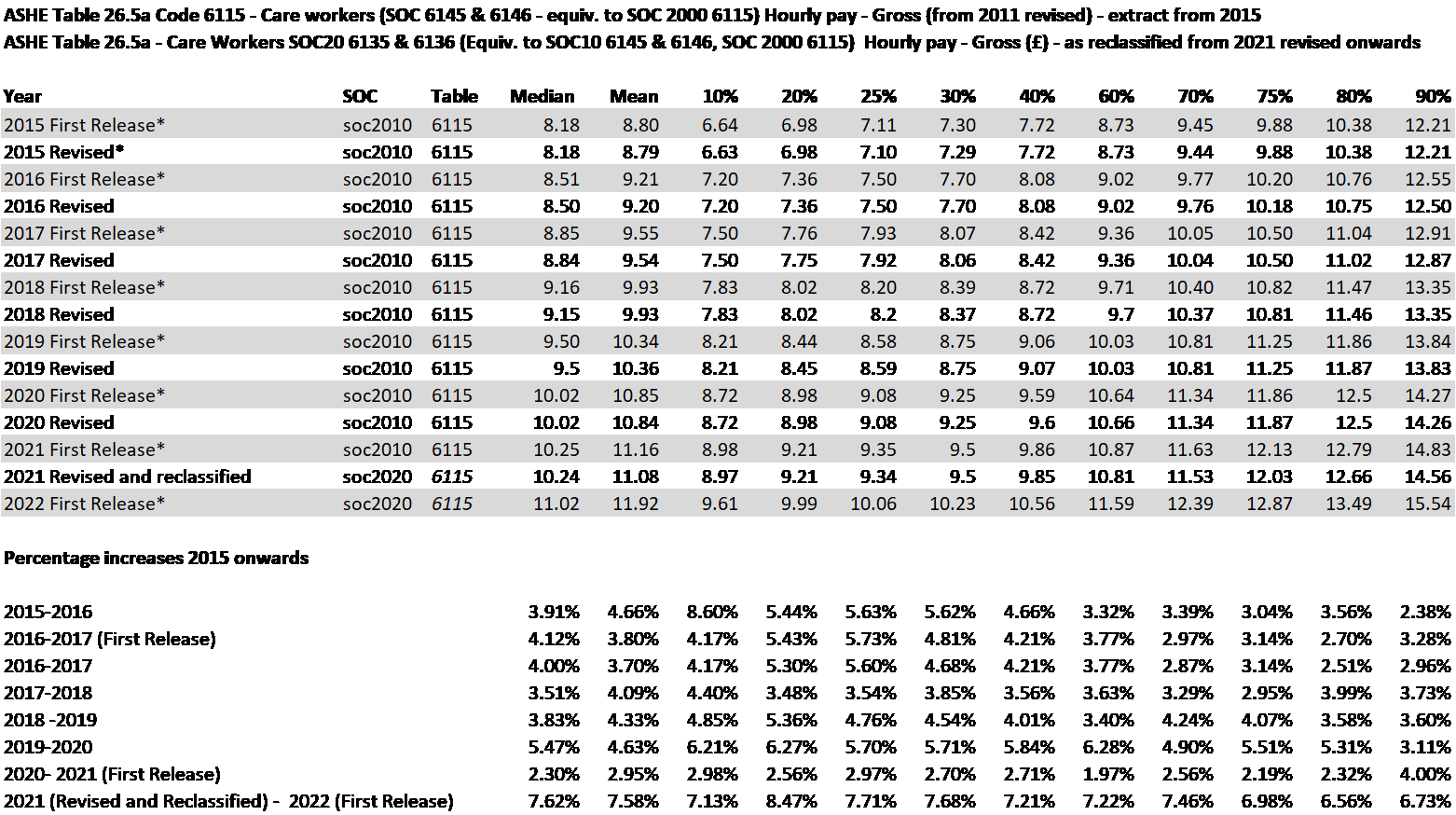The big picture
A summary of the annual increases included in the ONS release is reproduced below for ease of reference, based on Figure 7 of the 2022 ASHE release (and ASHE Table 2.1a). The average increase for all full time employees is 5.0%; the highest rate of growth since comparable records began, yet less than the corresponding increases for inflation of CPI 9% and RPI 11.1% for the 12 months ended April 2022 (vs. 1.5% and 2.9% respectively last year); in "real" terms, average weekly pay for full time employees fell by 2.6% in the period.

Last year, the increase for all full time employees was 4.3%, so this year's increase is slightly higher. However as for last year, any prior year comparison should be treated with caution; the data for April 2021 and 2022 continued to be affected by the COVID-19 pandemic, both in terms of wages and hours worked and issues with data collection. During the pandemic, earnings estimates were affected by changes in the workforce mix and the impact of the Coronavirus Job Retention Scheme (CJRS/furlough), the ONS notes, "we would encourage users to focus on long-term trends rather than year-on-year changes". The furlough scheme launched in March 2020 was brought to an end on 30 September 2021, therefore the impact of the scheme should reduce in each future release.
The links to the tables are as follows:
- The individual Tables numbered 1 to 28 can be found here, although they are not listed in numerical order. Selecting a particular table will take you to a page with links to all the figures published for that table from 1997 (or such later date as the table started) to the 2022 provisional figures. The figures for each year are opened as a zip file which gives access to all the sub-tables (for example 11.1a, 11.1b to 11.12). Clicking on the required sub-table will open the corresponding excel file. The tabs along the bottom of the spreadsheet further split the figures between All, Male, Female, Full-time and Part-time.
- Alternatively the Statistical Bulletin includes an overview of the changes from the 2021 to 2022 figures. To access the results tables, click on the green button "View all data used in this statistical bulletin" to bring up the same Tables 1 to 28 as accessed from the above link (although again not in numerical order).
Occupation Code reclassification in 2022
The ONS advised that from 2021, they have reclassified the Standard Occupation Classification ("SOC") from 2010 to 2020. This change happens every ten years, for example, in 2011 SOC 6115 was reclassified into SOC 6145 and 6146 and this year (the revised figures for 2021 and the First Release figures for 2022) SOC 6145 and 6146 were reclassified into SOC 6135 and 6136.
That means that the revised figures for 2021 (published under a SOC 2020 basis) do not match the original (provisional) figures for 2021 (published under a SOC 2010 basis) and, as such, should not be used in direct comparison with each other. Typically there would only be a nominal difference between the provisional and revised figures but on reclassification the change is much more significant.
Care costs and periodical payments
The ASHE table relevant to indexing the majority of periodical payment orders (most of which relate to care costs) is Table 26.5a SOC20 6135 & 6136 (previously SOC 2000 6115 and SOC10 6145 & 6146).
The Table 26 dataset can be found here. The figures are shown below together with the percentage increase over the final 2021 figures:

Care costs showed a 7.62% increase in the median hourly rate in the year to April 2021 (compared with 2.3% in the year to April 2021). From April 2022, the National Living Wage rose 6.6%; this impact will be seen in future ASHE releases.
The figures shown in Table 26.5a include employees who have been furloughed under CJRS. It is worth noting that the higher increase across all professions (of 5% on gross weekly earnings) was impacted by significant increases in Skilled trade occupations and Process, plant and machine operatives as per last year (being 7.2% and 8.6% respectively) and Elementary Occupations (7%).
These increases are in line with the overall 6.7% increase in Caring, Leisure and Other Service Occupations (Table 1, above). With the majority of periodical payments linked to the 80th percentile many annual payments due in December 2022 will increase by 6.56%, compared to 2.32% in 2021 (in line with CPI and RPI):

Earnings growth continues to be impacted by Brexit and COVID-19, when combined with the challenging economic environment in the United Kingdom due to the Cost of Living Crisis, rising rates of inflation and the conflict in Ukraine, there is much uncertainty; we await the publication of the Government's Medium Term Fiscal Plan, originally planned for 31 October 2022, since delayed to 17 November 2022.
DWF PPO administration
Our Forensic team offers an Annual Update service for periodical payment orders to calculate the next payment due and can also review earlier payment calculations if there are queries over the amounts paid.
For further information, please contact Helen Walters or Lauren Highton.

















